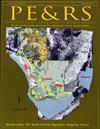基于SAR时序影像物候归一化莲花指数的莲花湿地分布图及物候方法
IF 2
4区 地球科学
Q4 GEOGRAPHY, PHYSICAL
引用次数: 0
摘要
荷花湿地是一种能高效净水的湿地。因此,对荷花湿地的分布进行快速、准确的遥感监测,对于保护荷花湿地,促进生态系统的持续健康发展具有重要意义。以物候为基础的方法已被证明在绘制某些不同类型的湿地地图方面是有效的。然而,由于云层覆盖导致的遥感数据严重缺失以及不同地区荷花湿地物候节律的差异,采用统一的方法实现不同地区的高精度制图是一个挑战。为了解决这一问题,本文提出了一种物候归一化莲花指数(PNLI)模型,该模型结合了SAR时间序列图像和基于物候的方法。研究结果表明,PNLI模型在不同区域具有良好的适用性,具有较高的制图精度。该模型能快速、同步、高精度地绘制大范围荷花湿地分布图。本文章由计算机程序翻译,如有差异,请以英文原文为准。
Mapping Lotus Wetland Distribution with the Phenology Normalized Lotus Index Using SAR Time-Series Imagery and the Phenology-Based Method
Lotus wetland is a type of wetland that can efficiently purify water. Therefore, rapid and accurate remote sensing monitoring of the distribution of lotus wetland has great significance to their conservation and the promotion of a sustainable and healthy development of ecosystems. The phenology-based method has proven effective in mapping some different types of wetlands. However, because of the serious absence of remote sensing data caused by cloud coverage and the differences in the phenological rhythms of lotus wetlands in different areas, achieving high-precision mapping of different regions using a unified approach is a challenge. To address the issue, this article proposes a Phenology Normalized Lotus Index (PNLI) model that combines SAR time-series imagery and the phenology-based method. The results of this study demonstrate that the PNLI model shows good applicability in different areas and has high mapping accuracy. The model can map the lotus wetland distribu tion in large areas quickly and simultaneously with high precision.
求助全文
通过发布文献求助,成功后即可免费获取论文全文。
去求助
来源期刊

Photogrammetric Engineering and Remote Sensing
地学-成像科学与照相技术
CiteScore
1.70
自引率
15.40%
发文量
89
审稿时长
9 months
期刊介绍:
Photogrammetric Engineering & Remote Sensing commonly referred to as PE&RS, is the official journal of imaging and geospatial information science and technology. Included in the journal on a regular basis are highlight articles such as the popular columns “Grids & Datums” and “Mapping Matters” and peer reviewed technical papers.
We publish thousands of documents, reports, codes, and informational articles in and about the industries relating to Geospatial Sciences, Remote Sensing, Photogrammetry and other imaging sciences.
 求助内容:
求助内容: 应助结果提醒方式:
应助结果提醒方式:


